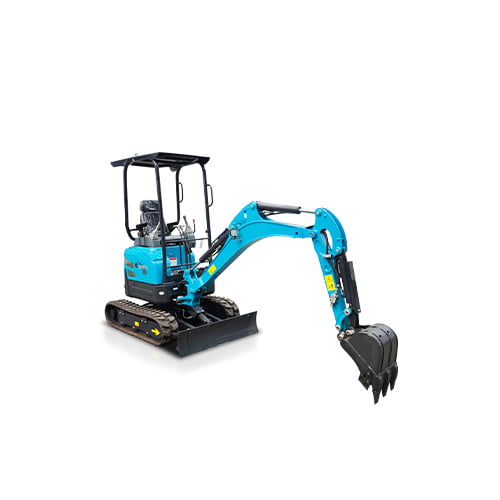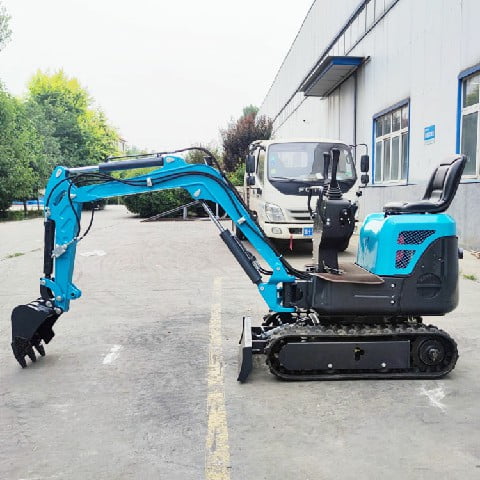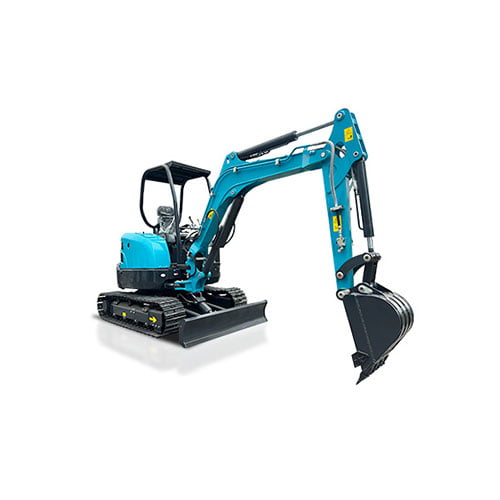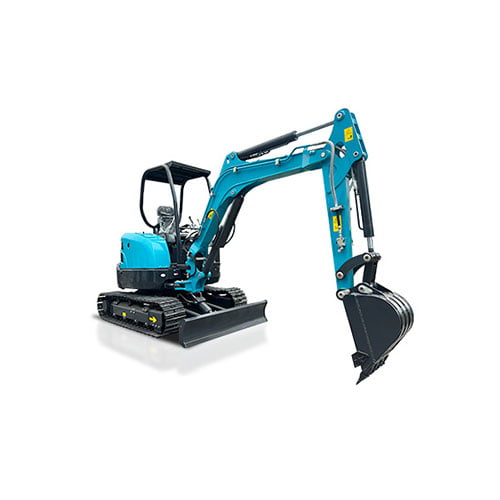Introduction

In the realm of construction machinery, the 1t excavator, also known as the mini excavator, has emerged as a versatile and indispensable tool. Its compact size and robust capabilities make it suitable for a wide range of tasks across various construction projects. This blog post delves into the diverse applications, benefits, and considerations of using a 1t excavator, highlighting its efficiency and effectiveness in modern construction practices.
What is a 1t Excavator?
A 1t excavator refers to a class of small, hydraulic excavators typically weighing around 1 ton. These machines are designed for precision digging and excavation work, equipped with hydraulic systems that power their movements and attachments.
Key Features of a 1t Excavator
- Compact Size: Its small footprint allows it to maneuver effectively in confined spaces, making it ideal for urban construction sites.
- Versatile Attachments: Can be fitted with various attachments such as buckets, augers, breakers, and grapples, enhancing its versatility across different tasks.
- Hydraulic Efficiency: Utilizes advanced hydraulic systems for smooth and powerful operation, ensuring precise digging and lifting capabilities.
- Transportability: Easy to transport between job sites using trailers or trucks, enabling quick deployment and flexibility in project scheduling.
Applications of a 1t Excavator
Urban Landscaping
1t excavators are invaluable in urban landscaping projects for tasks such as:
- Trenching: Digging narrow trenches for utility lines (water, gas, electricity) in urban settings where space is limited.
- Excavation: Digging foundations for small structures like garden sheds, small buildings, or urban infrastructures.
- Landscaping: Performing detailed landscaping work in residential or commercial areas, including grading, leveling, and shaping terrain.
Construction of Small Structures
These excavators play a crucial role in the construction of small-scale structures by:
- Digging Foundations: Excavating and preparing foundations for houses, garages, and other small buildings.
- Backfilling: Filling and compacting trenches and foundations with soil or gravel, ensuring stable ground for construction.
- Site Preparation: Clearing and leveling sites, removing debris, and preparing terrain for construction activities.
Utility Installations
In utility projects, 1t excavators are used extensively for:
- Installing Utilities: Digging trenches and installing underground utility lines such as water pipes, sewer lines, and electrical conduits.
- Excavating Around Utilities: Safely excavating around existing utilities for maintenance, repairs, or upgrades without causing damage.
- Clearing Debris: Clearing debris and obstacles from utility corridors and access routes, facilitating efficient utility operations.
Road Maintenance and Repair
For roadworks and maintenance tasks, these excavators are employed for:
- Pothole Repair: Digging out damaged pavement, preparing the area, and facilitating repairs.
- Ditch Clearing: Clearing and maintaining roadside ditches and drainage systems to prevent flooding and erosion.
- Landscaping: Assisting in roadside landscaping projects, including planting, mulching, and maintaining green spaces.
Demolition and Site Clearance
In demolition projects, 1t excavators are used for:
- Small-Scale Demolition: Breaking down small structures such as sheds, garages, or sections of buildings.
- Debris Removal: Clearing demolition debris and preparing sites for new construction or redevelopment.
- Material Handling: Transporting and placing materials such as gravel, soil, or landscaping elements within construction sites.
Advantages of Using a 1t Excavator
Versatility
The ability to use a wide range of attachments makes the 1t excavator adaptable to various tasks within a single project, reducing the need for multiple machines on-site.
Maneuverability
Its compact size allows the 1t excavator to navigate through narrow passages and tight spaces, enhancing operational efficiency in urban and confined construction environments.
Cost-Effectiveness
Compared to larger excavators, the 1t excavator typically has lower operating costs, making it suitable for smaller projects, residential construction, and budget-conscious contractors.
Environmental Impact
With lower fuel consumption and reduced emissions compared to larger machines, the 1t excavator offers a more environmentally friendly option for construction activities, aligning with sustainable construction practices.
Considerations When Using a 1t Excavator
Site Conditions
Evaluate ground conditions, soil stability, and access points to ensure safe operation and prevent accidents during excavation and lifting activities.
Attachment Selection
Choose the appropriate attachments based on specific task requirements (e.g., bucket size, type of material handling) to maximize productivity and operational efficiency.
Maintenance
Regular maintenance is crucial to ensure the excavator operates smoothly and reliably. This includes checking hydraulic systems, inspecting tracks or tires, and lubricating moving parts according to manufacturer guidelines.
Case Studies and Examples
Table: Applications of 1t Excavators in Different Construction Projects

| Project Type | Application of 1t Excavator |
|---|---|
| Urban Landscaping | Trenching, excavation, landscaping tasks |
| Small Structures | Foundation digging, backfilling, site preparation |
| Utility Installations | Utility trenching, installation of pipes/conduits, debris clearing |
| Road Maintenance | Pothole repair, ditch clearing, landscaping |
| Demolition and Clearance | Small-scale demolition, debris removal, material handling |
Conclusion
The 1t excavator stands as a versatile and essential tool across various construction projects, offering compact size, powerful capabilities, and adaptability through versatile attachments. Whether employed in urban landscaping, utility installations, road maintenance, or demolition, its efficiency and maneuverability significantly enhance project productivity and operational flexibility. Understanding its applications and advantages empowers construction professionals to leverage its potential effectively, contributing to successful project outcomes and client satisfaction.
FAQ
Q:What are the primary advantages of using a 1t excavator?
A:The primary advantages include its compact size for maneuvering in tight spaces, versatility with various attachments, cost-effectiveness compared to larger machines, and lower environmental impact.
Q:What attachments can be used with a 1t excavator?
A:Attachments include buckets for digging, augers for drilling, breakers for demolition, and grapples for handling materials, among others. The choice depends on specific project requirements and operational needs.
Q:How do you transport a 1t excavator to different job sites?
A:1t excavators can be transported using trailers or trucks equipped with ramps. Proper securing and balancing during transportation are essential to prevent damage to the machine and ensure safety on the road.
Q:What maintenance is required for a 1t excavator?
A:Regular maintenance includes checking hydraulic systems for leaks or malfunctions, inspecting tracks or tires for wear, lubricating moving parts, and performing routine inspections according to manufacturer guidelines.
Q:Can a 1t excavator handle heavy-duty tasks?
A:While primarily designed for smaller-scale projects, a 1t excavator can handle a range of tasks including digging, lifting, and minor demolition work. For heavy-duty tasks, larger excavators with higher capacity may be more suitable.




